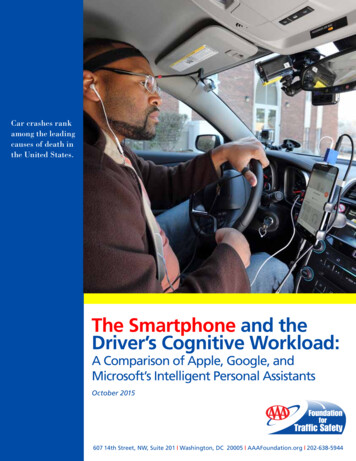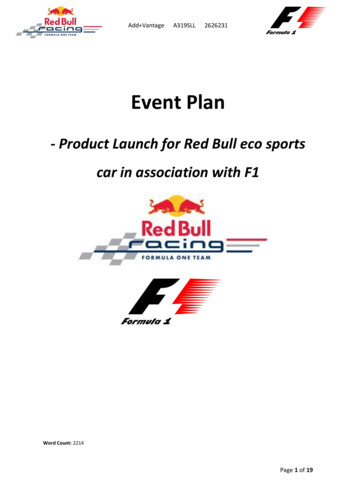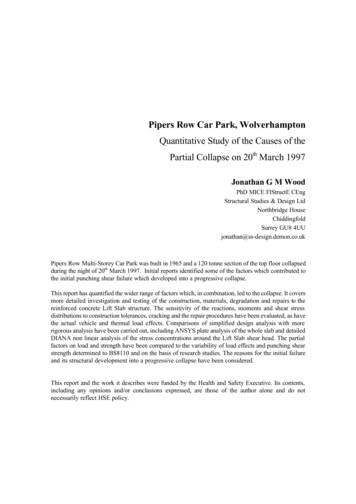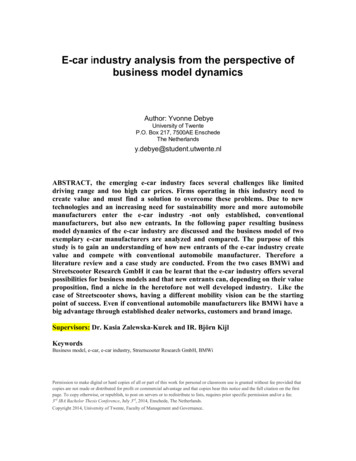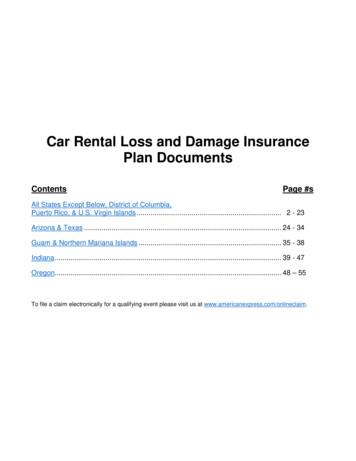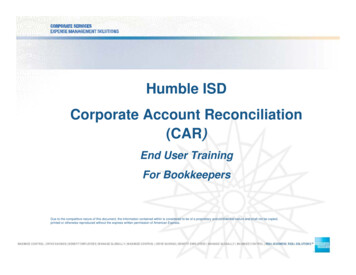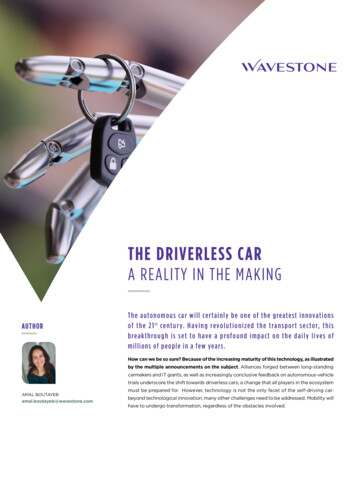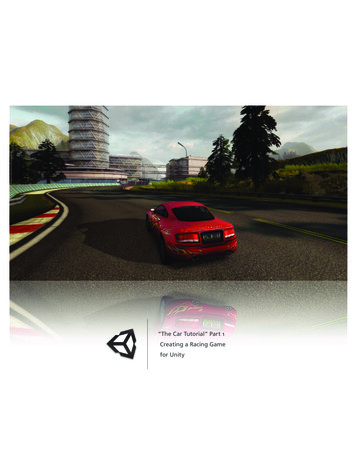
Transcription
“The Car Tutorial” Part 1Creating a Racing Gamefor Unity
unity“The Car Tutorial”― Creating a Racing Game for Unity, Part 1Introduction3Skidmarks11We will show3Max Marks12Prerequisites3Mark Width12We will not show4Ground Offset125Min Distance13Adding Collision6Texture13Shadow settings for the car model7Adding Sound14Adding the Car’s Components8Finalizing the Assembling15Part 1: Assembling the CarAdding a blob shadow10
“The Car Tutorial”― Creating a Racing Game for Unity, Part 1unityIntroductionThe aim of this tutorial is to show you how to create a racing game with Unity. We are going toassemble a car from a 3d model, scripts and Components. We provide you with a complete projectof a driving game, where you can play with a finished scene and explore how everything is put together. We also provide you with a scene that has everything ready but the car, which you will thenwork on completing.We will showLet us begin by talking about what this tutorial will deal with. It is divided into three distinct sections that can worked on independently of each other:1. Assembling the CarHow to assemble a Car Prefab from a 3D model, scripts and components. This is the section you arereading right now.2. Tweaking the CarHow to tweak the car to behave “better” or in different ways.3. Under the HoodA more in-depth look at the actual code that drives the car.PrerequisitesThe tutorial is not intended as an entry point to learning Unity. You should have a basic understanding of how Unity is organized, what a GameObject is, what Components are and so on. Some3
“The Car Tutorial”― Creating a Racing Game for Unity, Part 1unityproficiency in scripting is also recommended. This being said, we will explain a lot of stuff alongthe way, basic and advanced.We will not show All the other scripts. The very basics. We will not go in depth with explaining the basic workflow and components inUnity. For that there are many other resources available http://unity3d.com/support/resources/The User Manual and the Scripting Reference are valuable companions as you follow along thistutorial. We suggest that you visit these resources when ever you encounter a built in Componentor function that you’d like to know more about.The approach taken at first is that of code monkey see, code monkey do: You follow the instructions we give about putting a car together and changing it’s variables. Hopefully you will be curious about how it works, learn something from seeing how everything is put together and do someinvestigation on your own. Feel free to explore.In the last and longest section we dive more deeply into the actual code that makes the car drive.This is not a line-by-line walkthrough, but we will cover most of what is going on. One way to learnprogramming or improve ones skills is to look at a lot of code (supplemented by doing a lot ofprogramming). We are certain that you will learn a lot from following this closely and getting anunderstanding of how the code works together.4
“The Car Tutorial”― Creating a Racing Game for Unity, Part 1unityPart 1: Assembling the CarDownload the zipped project folder from orial.zipStart by opening the scene named ‘CompleteScene’. This scene has the car already setup, so youcan try it out by pressing the Play button. This will show you the end result of what we are goingto build.When you are done playing around, open the scene named‘TheTrack’. This scene contains what is needed to race, except themost important part - a car.Now drag the car model into the Scene. In the Project view you find it under Models/Car/catamount.Depending on where you dragged the car, you probably want to change it’s position to a moresuitable one. I suggest that you change its position in the inspector to something like (860, 102.3,878) and set it’s y-rotation to 130.For the rest of the tutorial, this GameObject will be referred to as ‘Car’ so you might as wellrename it now.This is just the 3D model of the car. If you look in the Inspector, you will see that it contains a number of children such as the car’s body, windows and wheels. It also contains two simple meshes that5
“The Car Tutorial”― Creating a Racing Game for Unity, Part 1unitywe will use for the car’s colliders. Don’t worry about them being visible for now, we will change that. Take some time lookingat how the car is arranged by different parts, and how they arerelated to each other in the hierarchy.For various reasons, we want the car to be in it’s own layer. Withthe Car GameObject selected, go to the Inspector and select ‘car’in the layers drop down menu. In the popup menu click ‘Yes, change children’ to make the changeapply to all GameObjects in the car’s hierarchy.The Car GameObject has an Animation component attached by default. Since this is not somethingwe are going to use, go ahead and do a little clean up by clicking the small wheel to the right ofthe Animation Component and selecting ‘Remove Component’.Adding CollisionNow we’ll set up the collision components for the car toprevent it from falling through the ground when runningthe scene. Instead of using complex mesh colliders basedon the actual mesh of the car, we have setup two meshesthat are much simpler, that fit the top and bottom of thecar. For performance reasons, we are using these meshesas the collision model. Click on the Collider Bottom game object which is6
“The Car Tutorial”― Creating a Racing Game for Unity, Part 1unitylocated as a child of the Car. Go to the Component/Physics Menu and click the MeshCollider to add one to the game object. Click the Material dropdown-selector on the newly added MeshCollider component and selectthe Car physics material. Check the two boxes ‘Smooth Sphere Collisions’ and ‘Convex’ Since the colliders are going to be invisible, go ahead and remove the MeshRenderer and MeshFilter Components from the GameObject (Click the small cog wheel to the right of the Components and select ‘Remove Component’. Do the same as above for the Collider Top game object.Shadow settings for the car modelWe are going to change the shadow settings for the car model for two reasons. First of all turningoff shadow casting or receiving for objects that don’t really need it is very good practice for performance reasons. Second of all we feel that it looks better to not have the car receive shadows. Itmight be more pleasing to the eye that shadows are not constantly appearing and disappearing onthe car when it is traveling at high velocity under the level geometry. It’s up to you what you preferthough. If you want more realistic shadow behavior, it is entirely possible. Just change the settingsaccording to your liking.The settings we use for the various parts of the car are the following:Body: Cast Shadows enabled. Receive Shadows disabled.Body Interior: Cast Shadows enabled. Receive Shadows disabled.Car Windows: Cast and Receive Shadows disabled7
“The Car Tutorial”― Creating a Racing Game for Unity, Part 1unityDiscBrakes: Cast and Receive Shadows disabledWheels: Cast Shadows enabled. Receive shadows disabled.Adding the Car’s ComponentsNow let’s start adding the components needed to make the car actually work onto the CarGameObject.First of all, we need a way to control the car’s position in theworld by physical simulation, and the built-in RigidBody component is perfect for that. With the Car Game Object selected,go to the Components menu and select Physics/RigidBody. Accept the message Unity gives you about losing prefab connection, and observe how the GameObject now has a Rigidbody attached as one of it’s components. The car obviously weighs more than just one kilo, so start by changing the Rigidbody’s mass tosomething more realistic like 1500. Next we have the drag and angularDrag properties, which are forces that slow down the Rigidbody’s speed and rotation. We will control the drag of the car through scripting, so just set thedrag and angularDrag properties to 0. Locate the Car.js script in the folder ‘scripts/JavaScripts’ and drag it onto the Car GameObject.This script is the “engine” of the car, and is the script we will focus on explaining the most atthe end of this tutorial.8
“The Car Tutorial”― Creating a Racing Game for Unity, Part 1unityThe Car-script component has a lot of different variables that will be explained when we starttweaking the car, and even more when we walk through the code. For now we just want to setupwhat is needed to be able to take the car for a quick test run.First of all, the car script needs to know about thewheels that the car has. In the Inspector you willsee the Front Wheels and the Rear Wheels, andnotice that both of them can be expanded by clicking on the small arrow to the left of the names. Set the size of the Front and Rear Wheels to 2, making room for two front wheels and tworear wheels. Now expand the WheelFL, WheelFR, WheelRL and WheelRR in the inspector. You will seethat they each have a DiscBrake as a child, and that each disc brake has a wheel as a child. Fornow you should be content with knowing that the disc brake and wheel game objects are thegraphical representation of the wheel. Drag the DiscBrakeFL and DiscBrakeFR to the two open slots in the Front Wheels under theCar script and the DiscBrakeRL and DiscBrakeRR to the slots under the Rear Wheels. You might ask - why are the DiscBrakes the wheels? And the explanation is simple: The discbrakes are parent Game Objects to the tire graphics, so setting the discs as wheels will include the tires.9
“The Car Tutorial”― Creating a Racing Game for Unity, Part 1unityAdding a blob shadowThe directional light will make the car cast anice shadow on the road if shadows are enabledin your project. But we also want to add theshadow that is under the car, as seen in the image here.For that we will use a projector that projects ablob shadow resembling the shape of the caronto the road directly under the car.A projector is a built-in component that works just like a real life projector. You specify the texturethat you want it to transmit, and based on the settings for the projector and the distance to thetarget(s), it will draw this texture onto the objects that are in it’s way. In the Hierarchy, create an empty GameObject and drag it to the Car to make it a child of it. Name it ‘Blob shadow projector’ Add a Projector component to the Blob shadow projector (Component- Renderer- Projector) Set the projectors Near Clip Plane to 0.1, its Far Clip Plane to 50, its Field of View to 30. Assign the Blob shadow material to its Material slot. In the ‘Ignore Layers’ select ‘Everything’ and then deselect the ‘Road’ layer, thus making theprojector only cast the blob shadow on the road. Add the BlobShadowController.js script (in the Scripts/CSharpScripts folder in the Project view)The position and rotation of the Projector Component gets updated each frame in the Blob Shadow10
“The Car Tutorial”― Creating a Racing Game for Unity, Part 1unityController script, which is pretty simple. In short, it is placed 10 meters above the car and gets itrotation set based on the rotation of the car. You can take a look at the script and try changing thevalues if you want the car’s blob shadow on the road to look differently.SkidmarksSome of the things that make it fun to drive thecar are pushing the car to slide around a corneror doing a u-turn at high speed. To enhancethe effect of the wheels sliding on the road andmake it a bit more believable, we are going toadd some skidmarks to the surface we’re drivingon when the car is sliding.The way we set the skidmarks is by having a script that controls all the skidmarks in the scene. Thiscontroller is responsible for creating the mesh that represents the skidmarks. Each wheel knowsits own position, and whether or not it is sliding. We use this information to register a point in theworld where we want the skidmark to be in relation to the skidmark controller. We let each wheelkeep track of the previous skidmark-point so that the skidmarks from several wheels don’t getmixed up.We have created a prefab for this that you can just drag into the scene: Drag the Skidmarks prefab from Prefabs- VFX- Skidmarks into the scene.11
“The Car Tutorial”― Creating a Racing Game for Unity, Part 1unityWe set the intensity of the skidmarks by adjusting the color of each vertex created. The intensity isdetermined by how much the wheel is skidding. For this to take effect we use a customized shaderthat uses the alpha from each vertex when rendering the skidmarks.As with the car there are several things that can be changed to make the skidmarks match better tothe car that you are trying to build. Looking at the Skidmarks Component on the Skidmarks gameobject you should see that there are a few public variables that can be tweaked.Max MarksThe Max Marks variable determines the number of positions for the skidmarks that can exist in thescene at any time. All the wheels are using the same Skidmarks, so this number counts for all wheels.Whenever the maximum number is reached, the ones created first will be overwritten.Increasing this number will also increase the combined length of all the pieces of skidmarks in the scene.Mark WidthThe Mark Width sets the width of the skidmarks. This has to be adjusted to fit the wheels of the vehicle created. If it is a monster truck you are trying to make a very wide skidmark might be needed,and if it is a supersonic car with ultra-thin tires made for setting the ground speed record, a verythin skidmark could work better.Ground OffsetWhen the mesh for the skidmarks is created, it will be created using the points calculated from thewheels for positioning the skidmark patches. These points will most often be right on the surfaceof whatever the wheel was driving on at the time it was sliding. When two meshes are rendered12
“The Car Tutorial”― Creating a Racing Game for Unity
“The Car Tutorial”― Creating a Racing Game for Unity, Part 1 unity “The Car Tutorial”― Creating a Racing Game for Unity, Part 1 unity 3 Introduction The aim of this tutorial is to show you how to create a racing game with Unity. We are going to assemble a car from a 3d model, scripts and Components. We provide you with a complete project of a driving game, where you can play with a .
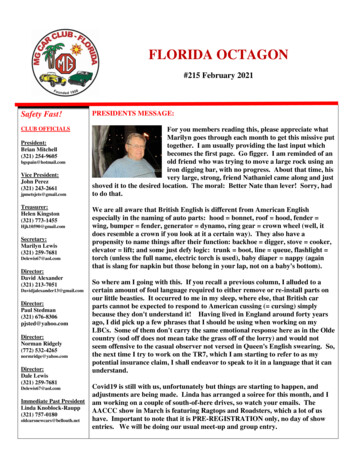

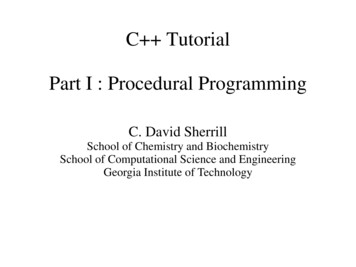
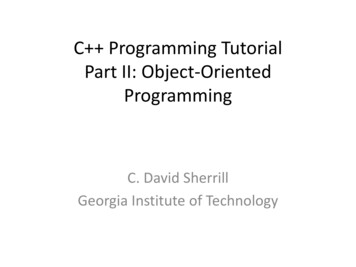
![Unreal Engine 4 Tutorial Blueprint Tutorial [1] Basic .](/img/5/ue4-blueprints-tutorial-2018.jpg)
